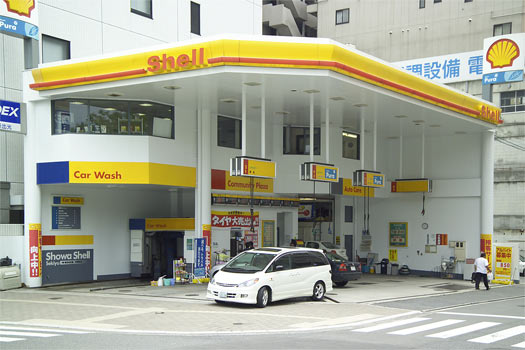Japan is a small country, which has to fit slightly less than half the population of the U.S. into an area just 1/25th the size. This makes it important for people to use less space, and you can see many ways in which the Japanese go about doing this in their cities. First, many businesses such as family restaurants or electronics retailers are built up high, with the ground level clear for cars to park, which saves a lot of space. Houses with business built into them are quite common in Japan, like Seven-Eleven convenience stores with apartments above for the manager to live in, or my own house, which contains the small liquor shop that my wife’s family has operated for fifty years. Gas stations need to save space, too, and many have their pumps located in the roof, with hoses that can be dropped down from above, allowing for more space for cars waiting to be refueled. For parking a lot of cars in a small area, the Japanese have automated car storage systems (essentially “car elevators”) that will whisk your car away and store it while you shop, then return it to you when you insert your parking stub. Of course, building up always gives you more room with work with, but it’s not always possible to do that in earthquake-prone Japan, which puts extra pressure on engineers to come up with ways of doing more with less space.

A Japanese gas station with hoses that come down from the ceiling, saving space.














